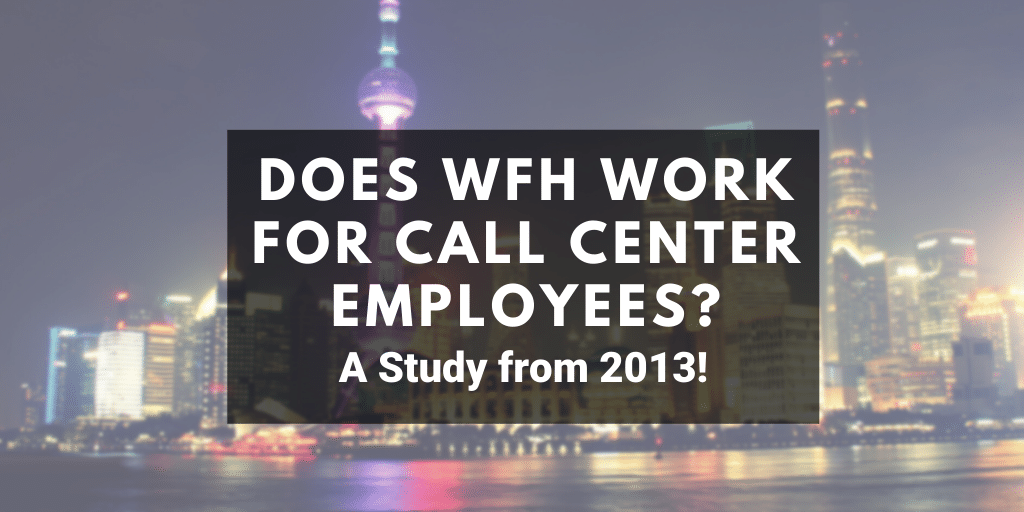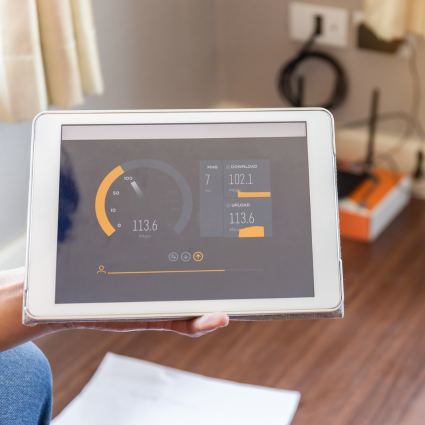
Working from home (WFH) is not a new concept. Formerly called “teleworking”, most people got to experience it sporadically, if at all, before the pandemic. In the last two years things have changed dramatically, and everyone has read articles, surveys, and studies that discuss and deal with different aspects of WFH during the pandemic.
So, it caught my attention when I came across the National Bureau of Economic Research paper titled “Does Working From Home Work? Evidence from a Chinese Experiment.” Interestingly, the study was done back in 2013. Different aspects of WFH have been under extensive study and research in academia and the corporate world for decades, but I was curious about what the findings were almost 10 years ago in 2013 and how they compare to what has happened over the last two years.
The Study Set Up
The study was conducted in collaboration between Stanford researchers and CTrip, the largest online travel agency in China. The study set up was as follows:
- Call center employees only
- Nine month duration
- Size: 249 employees (volunteer participation, access to broadband internet, home workspace)
- WFH group: 131 randomly selected employees worked from home 4/5 days per week
- WFO group: 118 worked from the office 5/5 days per week
CTrip had incentives to allow their call center employees to WFH (lower office space cost, reduce attrition), but were worried about WFH becoming “shirking from home” (eg. not really working at all) without supervision. To oversee that fear/question, they decided to do a study assisted by academic researchers from Stanford University, in order to control for variabilities, and make solid conclusions.
In addition, the nature of the call center employee responsibilities lent itself well to a WFH environment, since there is low need for interaction and collaboration between employees, and it requires equipment and facilities that many employees have readily available at home (broadband, workspace, phone line).
The Result
The pros for the WFH:
- Performance increased by 13% ($375/employee/year)
- 9% due to increased number of minutes they worked, because they were taking fewer sick days and breaks (employees reported that some days they felt well enough to work, but not well enough to commute 80 minutes)
- 4% due to increased number of calls per minute due to quieter work environment
- 50% less attrition compared to the WFO participants in the survey ($400/employee/year)
- Self reported substantially higher work satisfaction
- Reduced office cost ($1,275/employee/year)
The cons for the WFH:
- 50% lower rate of promotion compared to the WFO employees.
The Outcome
CTrip was so pleased with the results, that they extended the WFH option to the entity company. Then an interesting thing happened:
- Two-thirds of the WFO employees opted to remain in the office
- Half of the WFH employees decided to return to the office (citing loneliness and lower promotion opportunities)
The overall result was that many of the employees that went from the WFH to WFO were low performers at home during the study. And the ones that went from WFO to WFH really wanted to make the change. The end result was that after the self regulation to WFH or WFO by the employees the performance gains for the WFH employees went to 26% after the experiment.
Conclusions
I have to point out that this study was conducted with call center employees only, and if you are trying to extend the results to other types of jobs, your mileage may vary. However, having gone through the pandemic adjustments, this survey is in agreement with what most of us (that were fortunate to be able to continue working from home) and our employers have experienced:
- Satisfaction by employees reporting that quality of life and job satisfaction
- Employers not measuring any reduction in productivity, and quite the opposite in many cases
However, what many big companies are citing as a reason to entice employees to go back to the office is lower creativity and efficiency when it comes to collaborating, meeting, and being able to bounce around ideas in person. That is not something that the 2013 study could capture and it’s probably not relevant for call center employees.
Interestingly enough, the 2013 employees that initially volunteered to participate in the WFH study in China were mostly married, had children and faced long commutes to work. The same group of people that we hear these days prefer to maintain their current WFH option.





